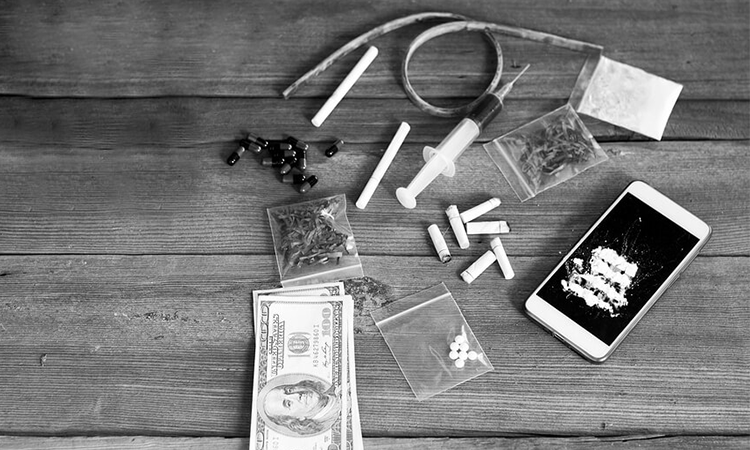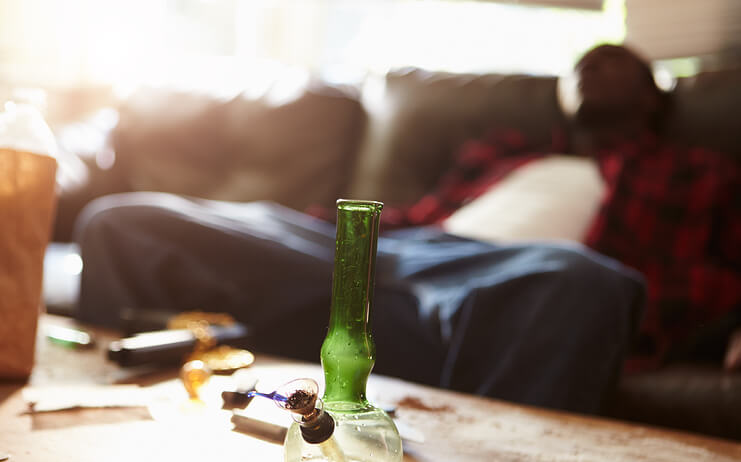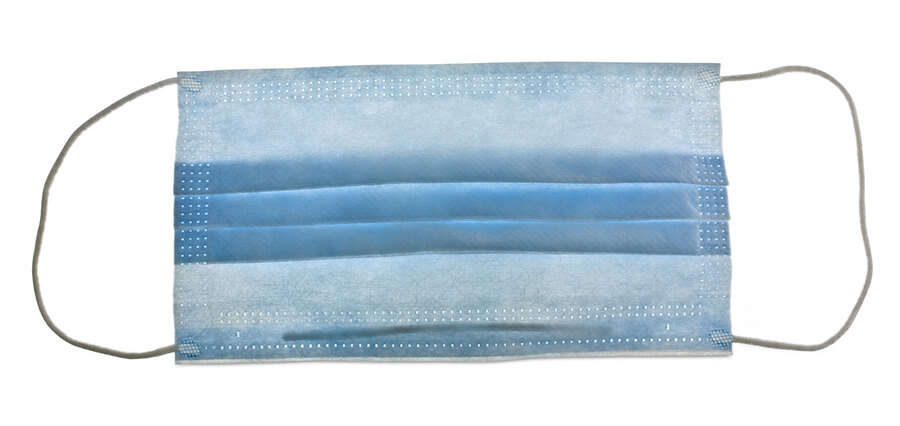
The term drug paraphernalia refers to any equipment, product or material that has a direct effect on the use of drugs. These include items meant to help with any of the following activities:
- Ingesting
- Inhaling
- Injecting
- Compounding
- Converting
- Concealing
- Manufacturing
- Producing
- Processing
- Preparing
So how does one identify drug paraphernalia? The following includes descriptions of these items, their uses, and drugs with which they are typically associated. If you find any of these items among the belongings of someone you know, they may be using drugs. One item alone may not be an indicator of drug use, but several together should warrant concern.
Rolling Papers and Cigars
Nowadays, rolling papers are most often used with marijuana, since cigarette papers can be purchased already rolled into tubes. Marijuana has a tendency to come loose, however, so it has to be “packed” into something for the purpose of smoking – this is called a joint.
Marijuana can also be smoked out of empty or hollowed out cigar casings, or what is known as a blunt.
Roach Clips
Roach clips are small metal “alligator” clips that may be adorned with flowers or beads and sometimes resemble hair accessories. They are used by marijuana smokers to hold a joint or blunt when it becomes too short to hold with fingers without being burnt. Look for signs of ashes or burn spots on these clips to identify them conclusively as drug paraphernalia.

Bongs, Hookahs, and E-cigarettes/Vape Pens
Bongs and hookahs, sometimes called water pipes, are smoking devices sometimes used for marijuana.
They work by filtering smoke through water – a technique believed by some to help remove toxins, despite evidence to the contrary. Some users also attest that bongs are easier than rolling joints and that they provide smoother hits.
In addition to nicotine, e-liquid marijuana cartridges are also available for e-cigarettes/vape pens, which also serve as drug paraphernalia.
Pipes
Since fewer young people smoke tobacco out of pipes, they are more often seen with drug use. Glass pipes, also called “bowls” are used for marijuana and are often blown with interesting designs and colors.
Crack cocaine, heroin, crystal meth, and some psychedelics can also be smoked. These pipes vary in appearance and may be as simple as glass or plastic tubes, sometimes with steel wool or screens inside to filter the smoke out from the drug itself.
Bottles and cans or apples with holes in them can also serve as makeshift pipes. If you see one of these with burn marks around a hole, you can be 99% sure that this is drug paraphernalia.
Tin Foil
Tin foil is commonly used to hold drugs while they are heated to give off inhalable fumes. Using tin foil makes it possible to smoke substances without the need for anything other paraphernalia, such as a pipe. Tin foil used for this purpose is usually found in small squares and may be blackened from contact with a lighter.
Needles and Small Spoons
A needle or syringe is an ominous indication that its owner has begun injecting substances intravenously. Many substances can be crushed and dissolved in water then injected, such as heroin, opiates/opioids, cocaine, and meth.
A habitual user of needles may have puncture wounds commonly called “track marks” on their arm and may even wear long-sleeved clothing to cover them.
Likewise, a needle may be found alongside a real or makeshift tourniquet, which is used to constrict the veins in the arm to make injection easier.
Many drug users mix their own injectable substances, employing a small spoon in which the crystallized form of their drug of choice is liquified then dissolved. This is accomplished by heating the spoon with a lighter, and thus, the bottom of it will usually be blackened.
Tubes, Mirrors, and Blades
Small tubes are the implement of choice for users who snort drugs like cocaine and heroin. Examples of these include shortened drinking straws disassembled writing utensil cylinders, or, classically, tightly rolled dollar bills.
The edge of a razor blade or a playing card is often used to chop up the drug and draw it into neat lines, making snorting easier. When doing this, drug users prefer hard, smooth, clean, flat surfaces, such as glass. Moreover, because these drugs are expensive, a reflective glass surface, such as a mirror, makes it easier to handle and is thus ideal for preparing the drug for intake.
Glow Sticks
Partygoers commonly use glow sticks under the influence of hallucinogenic or club drugs. The vibrant color of a glow stick and the contrast between it and a darkened nightclub reportedly enhances drug-induced altered states of consciousness. “Glow parties,” as they are referred to, are commonplace and publicly promoted as substance-free. Nonetheless, drugs are very often consumed before entry.

Surgical or Dust Masks
Abusers of MDMA/Ecstasy have utilized surgical masks and dust masks for the inhalation of mentholated vapor rub to intensify an Ecstasy high. Therefore, abusers of these drugs have been known to coat the inside of masks and wear them at home or at parties.
Beyond this use, surgical or dust masks are used to inhale, or “huff,” other toxic chemicals that produce a high. Utilizing a mask in this way is a hands-free method of keeping the substance over the mouth and nose.
Lollipops and Pacifiers
Several substances, such as meth, cocaine, and some hallucinogens, may cause the user to clench and grind their teeth or bite their lips, resulting in problems over the long-term. Because of this, people who regularly use such drugs may keep lollipops or pacifiers ready at hand to avert tooth and lips damage or prevent them from biting their tongues.
Tubes of Glue, Aerosol Cans, Balloons, Rags, and Nozzles
All of the items mentioned here are paraphernalia used by individuals seeking a high by inhaling a substance, or an inhalant. Such substances may have established, known effects or the user may be experimenting. Inhalants have been known to cause severe, irreversible damage and even death.
Tubes of glue or aerosol cans are straightforwardly just containers holding the substance, kept around for that use. Balloons are typically used to store inhalant gases for later use. A rag is commonly soaked in a liquid that produces fumes then placed over the mouth and nose for inhalation.
There is a multitude of inhalants available for those seeking a high, from household cleaning products and paint to highly toxic industrial chemicals. When substances of the latter kind are obtained, a nozzle may be required to extract the substance from its storage container, making it a rare, albeit noteworthy, component of drug paraphernalia.
Other Common Items That Could Be Used As Drug Paraphernalia or Indicate Use
People are resourceful when it comes to finding ways to use drugs or hide their drug use from other people. Thus, various everyday objects are utilized expressly for these purposes.
Breath fresheners, such as chewing gum, mints and lozenges, mouthwash, or oral sprays, are regularly used to mask the smell of smoke, such as from marijuana. Bloodshot eyes and dilated pupils are two very common symptoms of drug use and are therefore frequently relieved with eye drops or hidden from sight by sunglasses.
Drugs can be carried or hidden almost anywhere. Nevertheless, the following is a non-exhaustive list of common portable containers and hiding spots:
- Empty lipstick tubes
- Empty marker casings
- Small glass vials
- Empty makeup container
- Plastic baggies
- Disguised in candy wrappers or hidden in a bag of candy
- Sealed in the cellophane from a cigarette pack
If you find these items among the belonging of someone you love and suspect drug abuse, please contact us as soon as possible for a free consultation.